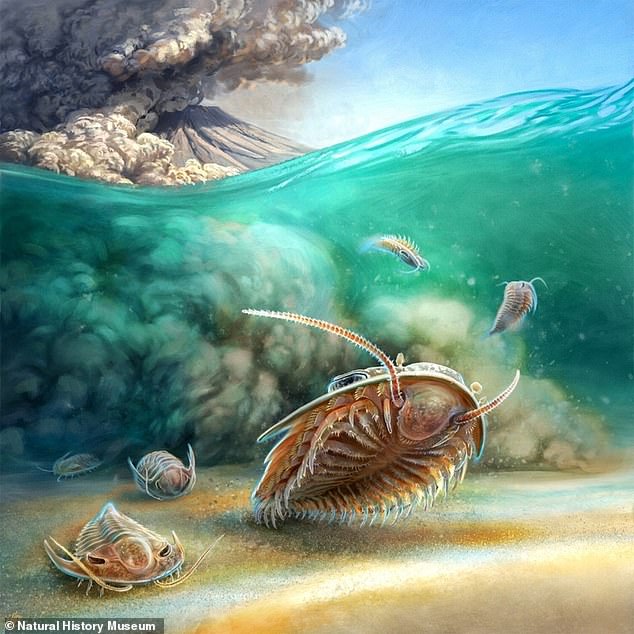Prehistoric Creature Discovered in Ashes, Scientists Give It Fitting Nickname
A prehistoric creature has been discovered encased in ash. It has been given a nickname befitting its funeral.
Scientists have discovered a fungus on a mountaintop in Morocco and found the most pristine example of a trilobite they have named ‘Pompeii’.
The creature was immediately fossilized by hot ash in seawater from a nearby volcano – similar to the fate of those in Pompeii during the eruption of Vesuvius in 76 AD.
While more than 20,000 species of trilobite have been unearthed, scientists have only found soft tissue — but the latest discovery included everything from the digestive tract to hair-like structures that ran along the appendages.
“I’ve been studying trilobites for nearly 40 years, but I’ve never felt like I’m looking at living animals as much as I am with this one,” said Dr Greg Edgecombe, a palaeontologist at the Natural History Museum.
A prehistoric ‘Pompeii’ has been unearthed in Morocco with legs around its mouth and a body covered in spikes when it lived 500 million years ago
“I’ve seen a lot of soft anatomy of trilobites, but it’s the 3D preservation here that’s really amazing,” Dr Edgecombe continued.
‘An unexpected outcome of our work is the discovery that volcanic ash in shallow marine environments can be a goldmine for exceptional fossil preservation.’
The asmal was collected in the High Atlas, the highest peak of a 350-metre-high mountain range in central Morocco.
Previous work has uncovered a wealth of marine fossils dating back 110 million years, which makes the latest discovery so special.
The ash preserved the trilobite’s entire body and filled its digestive tract, allowing researchers to analyze it for the first time.
Even small “lamp shells” attached to the trilobites’ exoskeleton remained attached with fleshy stems, just as they were during life.
Lead author, Prof Abderrazak El Albani, said: ‘As a scientist who has worked on fossils from different eras and locations, it was an extremely exciting experience for me to discover fossils in such a remarkable state of preservation in a volcanic environment.
‘I believe that pyroclastic deposits should become new research targets, given their exceptional potential for capturing and preserving biological remains, including delicate soft tissues.
‘These findings are expected to lead to important discoveries about the evolution of life on our planet Earth.’

The creature, known as a trilobite, was the ‘most pristine’ yet found, as it was well preserved in an ash casing that left its body fossilized almost instantly – similar to the victims of the eruption of Mount Vesuvius in Pompeii in 76 AD.
Using CT scans and computer models of virtual X-rays, the researchers found that the appendages at the edge of the mouth had a curved, spoon-shaped base. However, they were so small that they had not been noticed in less well-preserved fossils.
In fact, it was previously thought that trilobites had three pairs of head appendages behind their long antennae, but both Moroccan species in this study showed there were four pairs.
A fleshy lobe covering the mouth, called a labrum, was first documented in trilobites.
Co-author Harry Berks from the University of Bristol said: ‘The results revealed in exquisite detail a clustering of specialised leg pairs around the mouth, giving us a clearer picture of how trilobites fed. The head and appendages were found to have an inward-facing battery of dense spines, like those of modern horseshoe crabs.’
